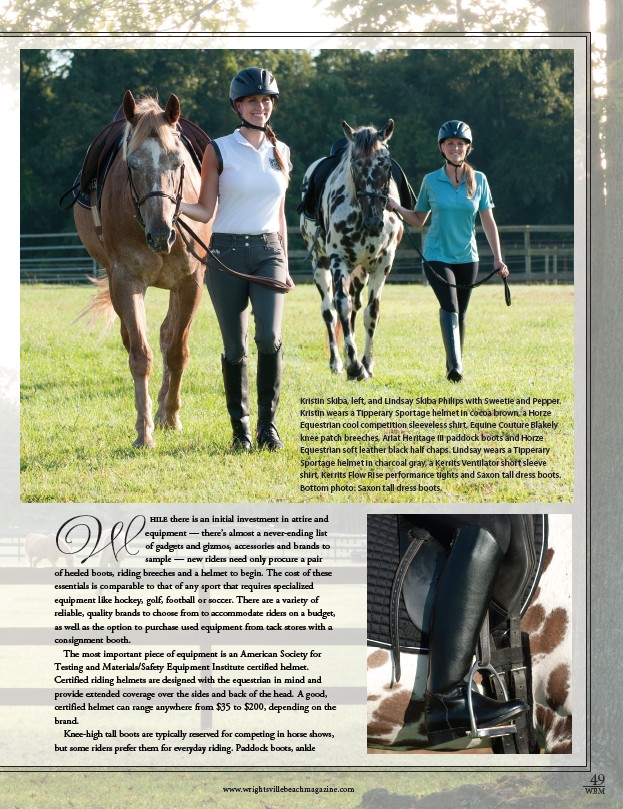
49
Kristin Skiba, left, and Lindsay Skiba Philips with Sweetie and Pepper.
Kristin wears a Tipperary Sportage helmet in cocoa brown, a Horze
Equestrian cool competition sleeveless shirt, Equine Couture Blakely
knee patch breeches, Ariat Heritage II paddock boots and Horze
Equestrian soft leather black half chaps. Lindsay wears a Tipperary
Sportage helmet in charcoal gray, a Kerrits Ventilator short sleeve
shirt, Kerrits Flow Rise performance tights and Saxon tall dress boots.
Bottom photo: Saxon tall dress boots.
hile there is an initial investment in attire and
equipment — there’s almost a never-ending list
of gadgets and gizmos, accessories and brands to
sample — new riders need only procure a pair
of heeled boots, riding breeches and a helmet to begin. The cost of these
essentials is comparable to that of any sport that requires specialized
equipment like hockey, golf, football or soccer. There are a variety of
reliable, quality brands to choose from to accommodate riders on a budget,
as well as the option to purchase used equipment from tack stores with a
consignment booth.
The most important piece of equipment is an American Society for
Testing and Materials/Safety Equipment Institute certified helmet.
Certified riding helmets are designed with the equestrian in mind and
provide extended coverage over the sides and back of the head. A good,
certified helmet can range anywhere from $35 to $200, depending on the
brand.
Knee-high tall boots are typically reserved for competing in horse shows,
but some riders prefer them for everyday riding. Paddock boots, ankle
www.wrightsvillebeachmagazine.com WBM
W